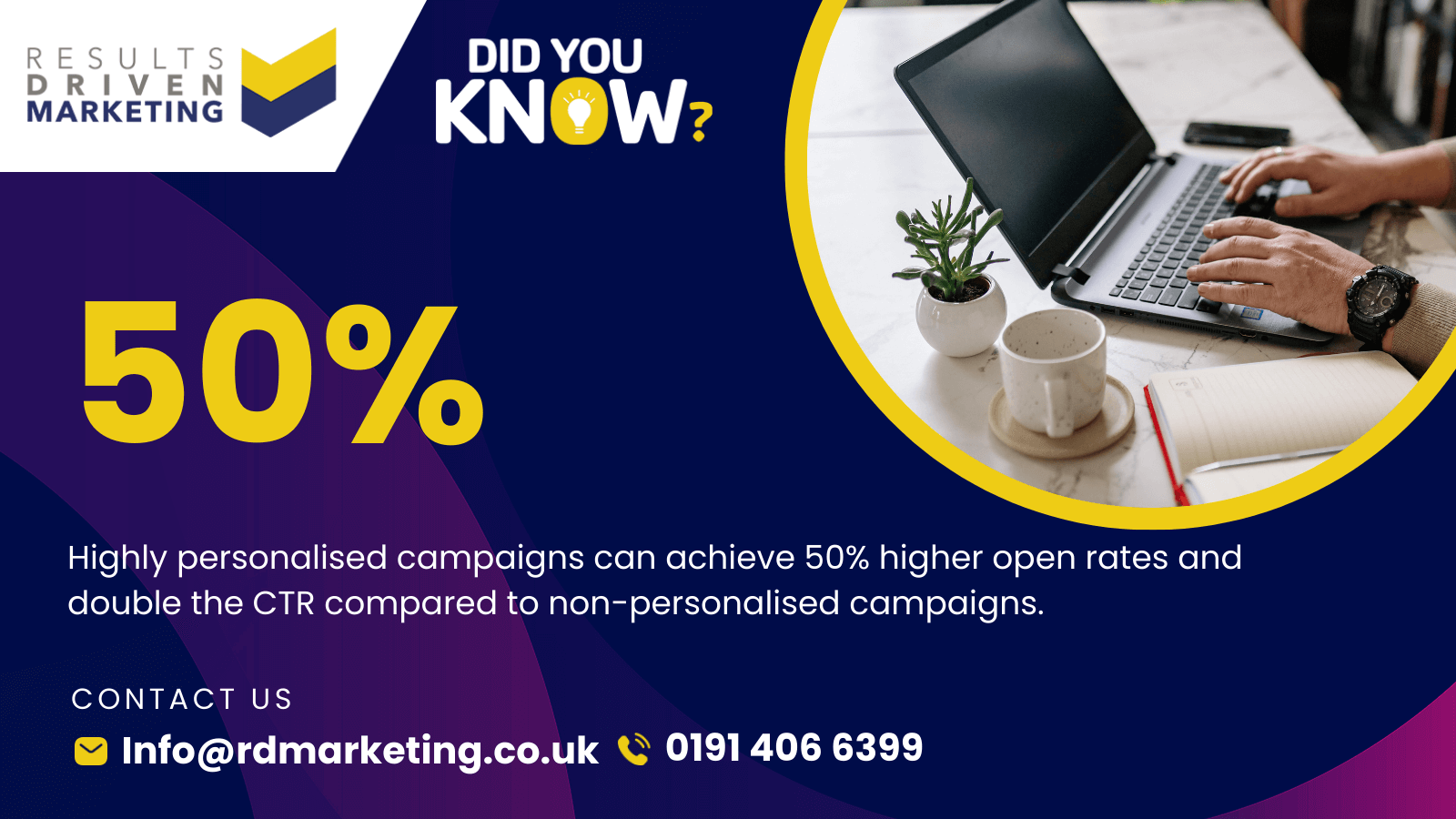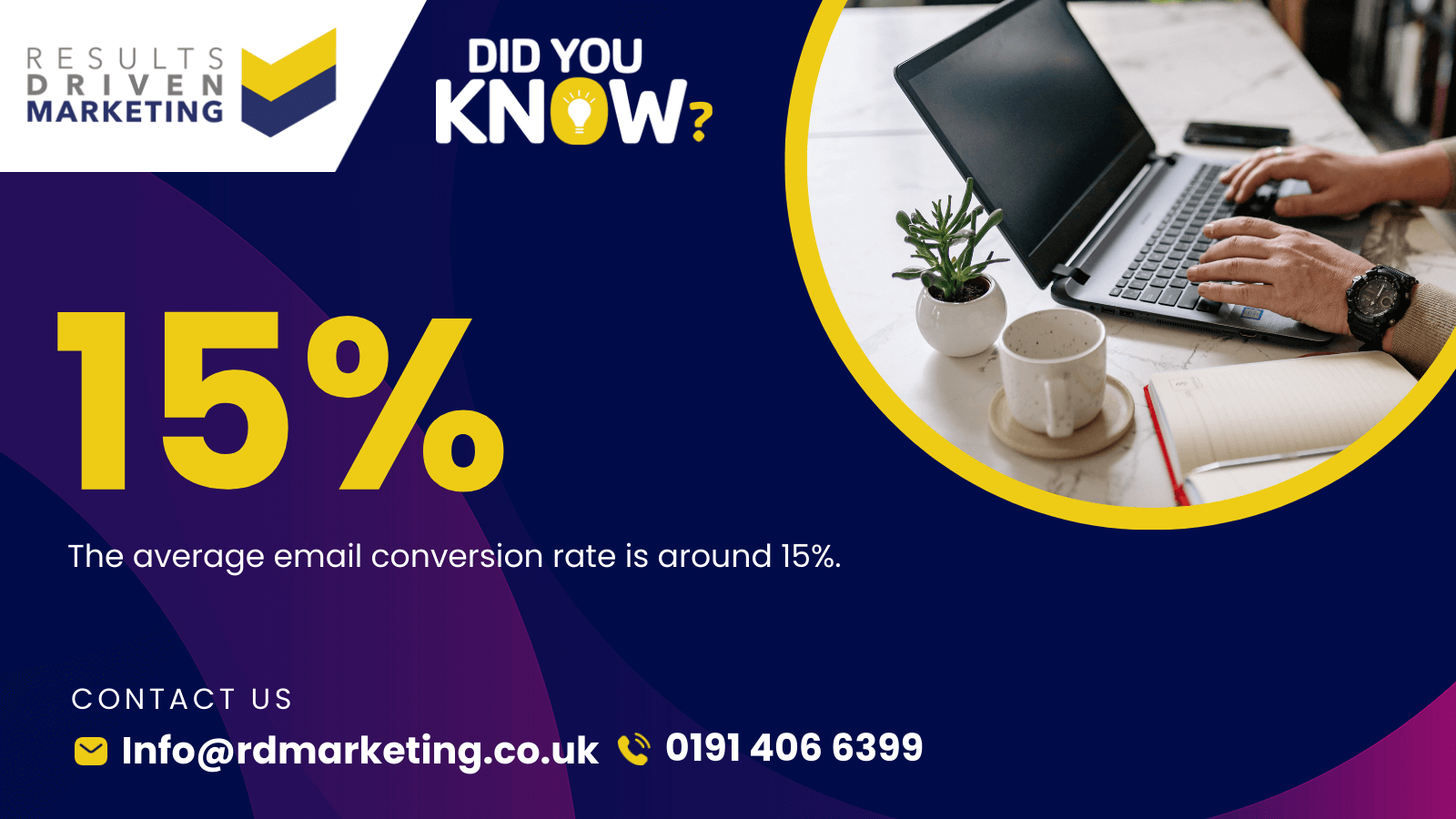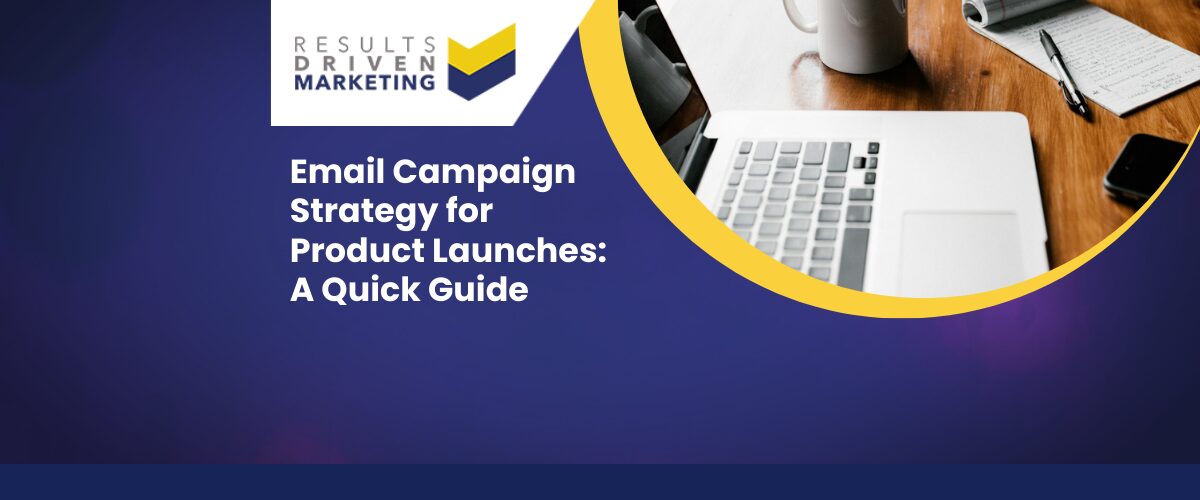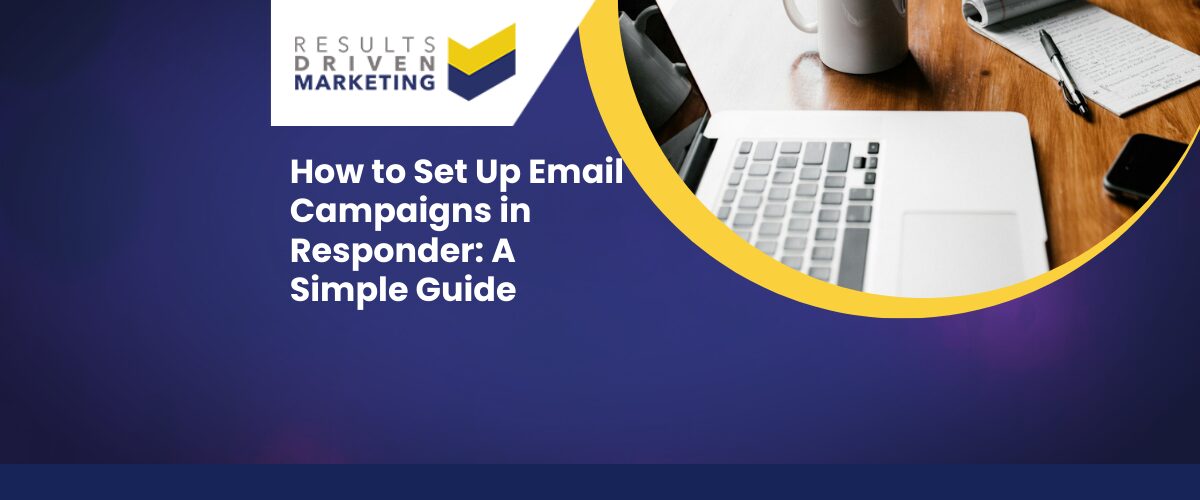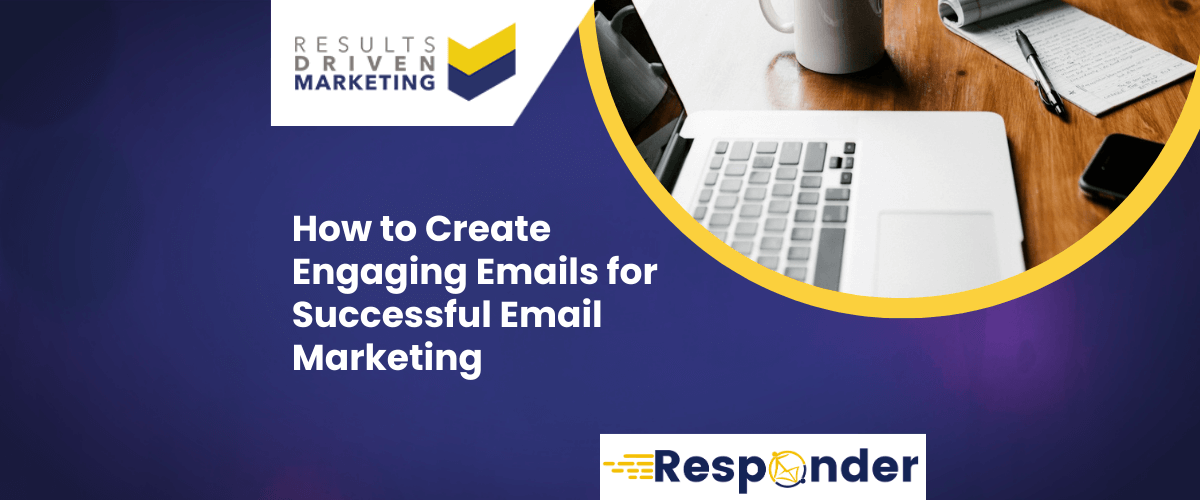
How to Create Engaging Emails for Successful Email Marketing
Creating engaging emails is essential for successful email marketing, as it ensures your message stands out in crowded inboxes and drives meaningful interactions. In today’s fast-paced digital world, a well-crafted email can boost open rates, improve click-throughs, and build lasting customer relationships.
However, achieving these results comes with challenges. Many marketers face:
- Low open rates: Without a captivating subject line, emails risk being ignored.
- High unsubscribe rates: Sending generic or irrelevant content can lead to audience loss.
- Spam filters: Poorly optimised emails can end up in spam folders, reducing visibility.
Engaging emails are more than just communication tools—they are the foundation of successful email marketing, helping businesses connect with their audience effectively and achieve better ROI.
We’ll also dive into how personalising content and segmenting your audience can significantly improve your email marketing results.
And of course, we’ll share expert tips on how to use data services like B2B data and email address list data to take your campaigns to the next level.
Table of contents:
Understanding the Basics of Email Engagement
At the heart of successful email marketing lies a crucial element: email engagement. This concept refers to how your audience interacts with the emails you send.
From the moment your email lands in their inbox to when they click a link, every interaction is a signal of how well your content resonates with them. Understanding email engagement is the first step in creating campaigns that truly connect with your audience.
What is Email Engagement?
Email engagement measures the level of interaction your recipients have with your emails. It’s not just about whether your email is opened—it’s about how your audience engages with the content, the links, and the overall message.
Key signs of engagement include:
- Opening the email: The first indication that your email has piqued interest.
- Clicking on links: A sign that the recipient found the content compelling enough to take action.
- Replying to the email: Engagement at its highest level, showing interest and intent.
By focusing on these aspects, you can refine your approach to ensure your campaigns align with the principles of successful email marketing.
Key Metrics to Measure Engagement
To understand and improve email engagement, it’s essential to track specific metrics. These metrics provide valuable insights into how your audience interacts with your content:
Open Rate
The percentage of recipients who open your email.
A strong indicator of the effectiveness of your subject lines and sender reputation.
Click-Through Rate (CTR)
The percentage of recipients who click on links within your email.
Reflects the relevance and appeal of your content and calls-to-action.
Reply Rate
The percentage of recipients who respond to your email.
Demonstrates how well your email fosters a two-way conversation.
Bounce Rate
The percentage of emails that fail to reach the recipient’s inbox.
Highlights issues with your email list quality, which can be addressed through Data Cleansing Services.
Unsubscribe Rate
The percentage of recipients who opt out of your email list.
Provides feedback on how well your content matches audience expectations.
How Engagement Impacts the Success of Email Marketing
Email engagement directly affects the performance of your campaigns in several ways:
- Improved Deliverability
High engagement signals to email providers that your emails are valuable, reducing the likelihood of them being flagged as spam. Regularly updating your list with B2B Data ensures better deliverability rates. - Higher Conversion Rates
Engaged recipients are more likely to take desired actions, whether it’s making a purchase, signing up for a webinar, or downloading a guide. For businesses targeting specific industries, Direct Mail Data and Email Address List Data can enhance precision and boost results. - Stronger Customer Relationships
Consistent engagement builds trust and loyalty over time. Incorporating automation with Email Marketing Management Services makes it easier to maintain these relationships.
Tools and Strategies to Enhance Engagement
To drive email engagement, use targeted strategies that cater to your audience’s preferences:
- Segment Your Audience: Utilise tools like Consumer Data to personalise content based on demographics and behavior.
- Leverage International Reach: If your business spans multiple countries, our International Email List ensures your campaigns resonate with global audiences.
- Ensure Compliance: Keep your campaigns compliant and professional with services like the CTPS Checker.
With the right data and tools, improving engagement becomes a seamless part of your email marketing efforts, ensuring your campaigns consistently achieve success.
Why Engaging Emails are Key to Successful Email Marketing
When it comes to successful email marketing, engagement is everything. If your audience isn’t opening your emails, reading them, or clicking on your links, it doesn’t matter how perfectly crafted your campaigns are—you’re missing out on real opportunities.
Engaged subscribers are more likely to take action, whether it’s making a purchase, signing up for a webinar, or just learning more about your services.
Studies show that the average open rate across industries is around 20%, while the average click-through rate (CTR) hovers at roughly 2.6%. Now, that may sound low, but highly engaging emails can significantly improve these numbers.
Emails that are personalised, well-targeted, and visually appealing can see open rates increase by up to 50%, while CTRs can more than double. And as engagement increases, so does your ability to build long-term customer relationships, drive brand loyalty, and boost your ROI.
When your audience engages with your emails, it signals interest, which in turn helps improve deliverability and reduces the chance of being flagged by spam filters. But the benefits don’t end there.
More engagement also means better long-term performance—higher customer retention, more repeat business, and a stronger overall email strategy.
Incorporating services like telemarketing data or direct mail data can enhance the targeting of your email campaigns, ensuring that you’re reaching the right audience.
And remember, a well-maintained email list with services like data cleansing can further improve engagement by removing outdated or irrelevant contacts, keeping your campaigns focused and effective.
In the end, engagement is the foundation of any successful email marketing strategy. The more relevant and engaging your content is, the more likely you are to see higher open rates, CTRs, and, ultimately, conversions.
Understanding Your Audience
When it comes to successful email marketing, understanding your audience is crucial. You can’t expect to send a one-size-fits-all email and see amazing results. Audience segmentation and personalisation are the keys to making your emails truly resonate.
People are more likely to engage with content that feels relevant and tailored to them, rather than something generic that could be sent to anyone.
So, how do you go about understanding your audience? It all starts with research and segmentation. By dividing your audience into smaller, more specific groups, you can send targeted messages that align with their needs, preferences, and behaviors.
Here’s a step-by-step guide to help you segment your audience effectively:
Gather Data
Start by collecting data on your audience. This can include demographic information (age, location, job title), behavioral data (purchase history, browsing activity), and engagement metrics (previous email interactions). Tools like CRM systems and email marketing platforms can help you track this data.
You can also gather insights from B2B data or consumer data, which will give you a broader understanding of who your customers are and what they’re looking for. This allows you to create segments that make sense for your business.
Define Your Segments
Once you have the data, it’s time to define your audience segments. You might segment based on:
- Demographics (e.g., age, gender, location)
- Interests (e.g., product preferences, content they engage with)
- Behavior (e.g., past purchases, engagement with previous emails)
For example, you might have a segment for new subscribers, loyal customers, or even those who haven’t interacted with your emails in a while. This ensures your messages are hyper-targeted.
Personalise Your Content
Personalisation goes hand in hand with segmentation. It’s about crafting content that speaks directly to each audience segment. Use personalised subject lines, tailor your offers, and even consider dynamic content that changes based on the recipient’s behavior or preferences. With tools like email address list data, you can refine your targeting to make sure you’re reaching the right people.
Monitor and Adjust
Finally, remember that successful email marketing is an ongoing process. Regularly monitor how each segment is engaging with your content and adjust your approach as needed. Use A/B testing, track open rates, and see which segments respond best to different strategies.
For deeper audience insights, using tools like CTPS Checker ensures compliance while also refining your contact lists. Engaging the right audience at the right time makes all the difference in driving results.
Crafting the Perfect Subject Line
When it comes to successful email marketing, your subject line plays a huge role in determining whether your email gets opened or ignored.
The subject line is the first impression your audience gets, and in many cases, it’s the deciding factor on whether they engage with your email at all. A strong subject line can dramatically increase open rates, while a weak one can cause your message to be lost in the inbox shuffle.
So, how do you craft the perfect subject line? Here are some best practices to keep in mind:
Keep it Short and Sweet
Brevity is key. Your subject line should be concise but impactful. Ideally, keep it under 50 characters to ensure it displays fully across different devices. Busy professionals or consumers often skim their inboxes, so your subject line needs to be easy to digest at a glance.
Personalisation Matters
Personalisation has been shown to improve open rates significantly. By including the recipient’s name or referencing something specific to them, you make the email feel tailored and relevant.
For instance, using a subject line like “[First Name], here’s how we can boost your ROI” can immediately grab attention. With email address list data, you can easily personalise your emails to different segments.
Add a Dash of Curiosity
A little intrigue can go a long way. Subject lines that spark curiosity without being overly vague can entice the reader to find out more.
Phrases like “Don’t miss out on this opportunity” or “Have you seen this yet?” can drive engagement, making your email more likely to be opened.
Consider Using Emojis (But Sparingly)
Emojis can add a bit of personality and color to your subject line, helping it stand out in a crowded inbox. Just be careful not to overdo it. A well-placed emoji can highlight the tone of your message, but using too many can make it look unprofessional.
Action-Oriented Language
Using action verbs encourages recipients to take immediate action. Words like “Get,” “Boost,” “Unlock,” or “Discover” can help convey a sense of urgency and excitement. For example, “Unlock exclusive tips for successful email marketing” gives a clear call to action while sparking interest.
Examples of High-Converting Subject Lines:
- “Limited Time Offer: Boost Your Conversions Now”
- “Get Your Free Guide to Successful Email Marketing”
- “[First Name], This Will Change Your Campaigns”
- “Increase Your Click-Through Rates with These Simple Tips”
By leveraging these subject line strategies, you can significantly increase your open rates, leading to a more successful email marketing campaign.
And remember, working with email marketing management services can help streamline your campaigns, ensuring your subject lines hit the mark every time.
Common Mistakes That Hold Back Successful Email Marketing
Even with the best tools and data, many campaigns fall short because of avoidable errors. Recognising these pitfalls can save your business time, money, and reputation.
Over-Sending Without Strategy
Bombarding your audience with too many emails leads to fatigue and higher unsubscribe rates. Instead, map out a clear frequency plan—weekly for nurture sequences, bi-weekly for newsletters, or monthly for longer-form insights.
Neglecting List Hygiene
Outdated or inaccurate data reduces deliverability and inflates bounce rates. Regularly cleanse your list with data cleansing services to keep campaigns targeted, compliant, and effective.
Generic, One-Size-Fits-All Messaging
Audiences expect relevance. Using segmentation and personalisation ensures each message speaks directly to the recipient’s role, sector, or challenge. This transforms generic outreach into a tailored conversation.
Weak Calls-to-Action
Even if your subject line and body copy resonate, a vague or hidden CTA can derail engagement. Keep CTAs bold, action-driven, and benefit-focused—for example: “Get Your Free Audit” or “Book a Quick Demo.”
Ignoring Mobile Users
More than half of emails are opened on mobile devices. Without a responsive design, your carefully crafted content risks being unreadable. Always preview and test across mobile and desktop before hitting send.
Avoiding these mistakes helps transform good campaigns into successful email marketing strategies that consistently drive opens, clicks, and conversions.
Writing Engaging Email Copy
When it comes to successful email marketing, the copy inside your emails is just as important as the subject line. Once you’ve convinced someone to open the email, your copy needs to keep their attention, address their pain points, and deliver real value.
The goal is to engage readers from the very first sentence and guide them smoothly toward your desired action—whether that’s clicking a link, making a purchase, or simply learning more about what you offer.
Here’s how to craft email copy that grabs attention and converts:
Start Strong with a Hook
The opening line of your email is crucial. You want to capture the reader’s attention right away. Start with a statement that addresses their pain point, a question that piques their curiosity, or an offer they can’t resist.
For instance, “Struggling to increase your open rates? We’ve got the solution you need.” This immediately speaks to a common problem many marketers face and promises a solution.
Use Short Paragraphs and a Conversational Tone
To keep your readers engaged, break your email copy into short, digestible paragraphs. Large blocks of text can feel overwhelming and cause readers to tune out.
A conversational tone makes your emails feel more personal and less like a sales pitch. Imagine you’re writing to a friend—be approachable, friendly, and human.
For example, “We all know how tough it can be to get noticed in a crowded inbox. That’s why we’ve come up with a few tricks to help you stand out and connect with your audience.”
Tools like email marketing management services can help streamline your communication while keeping it personal.
Be Clear with Your Call-to-Action (CTA)
Every email should have a clear goal, and your CTA should reflect that. Whether you want the reader to download a guide, schedule a demo, or make a purchase, make your CTA stand out. Use action-oriented language like “Download Now,” “Get Started,” or “Claim Your Offer.”
And don’t be afraid to repeat your CTA at least once within the email, especially if it’s long.
Tell a Story
Storytelling is a powerful way to connect with your audience. Use brief stories or anecdotes to illustrate a point, showcase your product in action, or relate to a challenge your audience might be facing. This not only makes your email more engaging but also more memorable.
For instance, “Last year, one of our clients saw a 30% increase in conversions after using B2B data to target their audience more effectively. Here’s how they did it…”
Balance Promotional Content with Value
Your emails shouldn’t just be about pushing a product or service. Instead, focus on providing value to your readers. Offer helpful tips, share insights, or provide solutions that address their needs. By offering valuable content alongside your promotional message, you build trust and credibility.
For example, if you’re promoting your data cleansing services, you could provide tips on maintaining clean data, explain the benefits of regular list maintenance, and then position your service as the solution.
Keep It Focused
Don’t try to accomplish too much in a single email. Stick to one core message, and make sure your copy flows logically toward that goal. Overloading your email with multiple offers or CTAs can confuse the reader and reduce the likelihood of any action being taken.
Incorporating these strategies into your email copy can significantly improve engagement and lead to a more successful email marketing campaign. And don’t forget—using resources like international email lists or telemarketing data can help you reach the right audience with the perfect message.
Designing for Engagement
When it comes to successful email marketing, the design of your emails plays a crucial role in capturing attention and driving engagement.
It’s not just about having compelling content; how that content is presented visually can make all the difference. A well-designed email is easier to read, more appealing, and encourages your audience to take action. So, what makes for an engaging email design?
Mobile-Friendly Design is Non-Negotiable
With over half of all emails being opened on mobile devices, making your emails mobile-friendly is essential for successful email marketing.
If your email doesn’t display well on a phone, it’s likely to be deleted or ignored. Ensure that your design is responsive, meaning it adapts to different screen sizes without losing its functionality or aesthetic.
Test your emails across different devices to make sure they look great on both desktop and mobile.
A clean, uncluttered layout with larger fonts and clear buttons will improve the user experience and engagement. Using email builders that offer mobile previews, like those included in email marketing management services, can make this process easier.
Eye-Catching Visuals
Visual elements like images, icons, and graphics can help break up blocks of text and draw attention to key parts of your message.
However, balance is key. Too many visuals can overwhelm the reader, while too few might make the email feel bare. Choose images that support your message and align with your brand.
High-quality, relevant images or even GIFs can boost engagement and add personality to your emails. For example, when promoting consumer data, you could use an engaging infographic to highlight key statistics. Just make sure the images are optimised for fast loading times, especially on mobile.
Best Practices for Layout, Fonts, and Imagery
- Layout: Keep the layout simple and clean. Use a single-column format, especially for mobile users, to avoid readers having to zoom in or scroll horizontally.
- Fonts: Stick to easy-to-read fonts. Sans-serif fonts like Arial or Helvetica work well because they’re simple and clean.
- Avoid using too many different fonts in one email—it’s best to stick to one or two max.
- Imagery: Use alt-text for your images. This ensures that if your images don’t load, the reader still gets an idea of what the email is about. And don’t forget, some email clients block images by default, so your email should still make sense without them.
The Importance of Testing Across Devices
Responsive design is a must, but testing across different devices is how you ensure your email looks perfect no matter where it’s opened. Before hitting send, make sure your email displays correctly on various screen sizes and platforms.
Tools like drag-and-drop builders, included in many email platforms, allow for easy design customisation. You can also use responsive templates to simplify the process and ensure consistency across devices.
Incorporating these best design practices will help elevate your successful email marketing campaigns, ensuring that your audience stays engaged and motivated to take action.
Plus, services like data enrichment can provide additional insights to further optimise your email design based on recipient behavior and preferences.
Personalisation and Dynamic Content
In the world of successful email marketing, personalisation is no longer just a “nice-to-have”—it’s an essential strategy. Personalised emails consistently outperform generic ones because they make the recipient feel seen and valued.
Instead of sending the same message to your entire list, personalisation allows you to tailor content based on individual preferences, behaviors, or demographics. The more relevant the message, the higher the engagement, and that leads to better open rates, click-through rates (CTR), and conversions.
Why Personalised Emails Work
People want to feel like the content they receive speaks directly to them. A personalised email doesn’t just use the recipient’s name; it delivers content that addresses their unique needs or interests.
Emails that are personalised, whether in the subject line or the body, generate higher engagement. For example, an email saying “John, here’s a special offer just for you” will naturally capture more attention than a generic message sent to thousands.
Using services like email address list data or consumer data helps you segment your audience, enabling more precise targeting for your personalised messages.
Dynamic Content for Enhanced Engagement
Personalisation can go beyond just inserting a name into an email. Dynamic content allows you to tailor the entire email experience to each recipient. For example:
- Product recommendations: If a subscriber has purchased a particular product, your email could showcase related items they might like.
- Personalised offers: Based on a customer’s past purchases or browsing history, you could offer a discount on products they’ve shown interest in.
- Location-based content: You could adjust your messaging or offers based on the recipient’s geographic location, promoting services or products that are more relevant to them.
Dynamic content helps keep your audience engaged by making every email feel fresh and relevant. It’s a powerful tool for successful email marketing because it ensures that each recipient sees content that speaks directly to their needs.
Examples of Successful Personalisation Strategies
- Abandoned cart reminders: Send personalised reminders with the specific items left in their cart, along with a compelling call to action.
- Birthday emails: Celebrate your subscriber’s birthday with a special offer or discount.
- Exclusive VIP content: Send your most loyal customers exclusive access to content or early-bird promotions, based on their purchase history.
For even more accurate personalisation, consider leveraging tools like data enrichment services, which enhance the quality of your customer data, allowing you to better understand their preferences and behaviors.
The Power of A/B Testing
In the realm of successful email marketing, A/B testing is a must-have tool. It’s the key to understanding what resonates best with your audience and allows you to make data-driven decisions to optimise your email campaigns.
But what exactly is A/B testing, and how can you use it to boost engagement?
A/B testing, also known as split testing, is the process of sending two variations of an email to a small portion of your audience to determine which one performs better. You then roll out the winning version to the rest of your list.
This way, you can improve open rates, click-through rates, and ultimately conversions—all of which are crucial for a successful email marketing strategy.
Step-by-Step Guide to A/B Testing
Choose an Element to Test Start by deciding what you want to test. Some common elements include:
-
- Subject lines: Test different tones, lengths, or the inclusion of personalisation (e.g., “John, don’t miss out!” vs. “Exclusive offer for you”).
- Call-to-action (CTA): Try variations in phrasing (e.g., “Download now” vs. “Get your free guide”) or button placement.
- Visuals: Test using different images, graphics, or even layout styles to see which drives more clicks.
Segment Your Audience Divide your audience into two random but equal groups. Send version A to one group and version B to the other. This ensures that the test is fair and that any differences in performance are due to the changes you’ve made, not the audience itself.
Measure the Results Give the test enough time to gather data—whether that’s open rates for subject lines or click-through rates for CTAs. Once you have the results, identify which version performed better.
Roll Out the Winner After you’ve determined the winning variation, send that version to the rest of your audience for maximum impact.
Examples of What to Test in Email Campaigns
- Subject Lines: Test personalisation versus generic, emojis versus no emojis.
- CTAs: “Learn more” versus “Shop now.”
- Design Elements: Full-width images versus smaller graphics.
Incorporating A/B testing into your successful email marketing strategy allows you to continuously optimise your emails for better engagement. And when you combine A/B testing with services like email address list data or telemarketing data, you’ll ensure that you’re testing on the right audience for even better results.
Automation and Drip Campaigns
Automation is a game-changer when it comes to successful email marketing. Instead of manually sending each email, automation allows you to create workflows that deliver the right message to the right person at the right time.
This not only saves time but also ensures that your emails are timely, personalised, and effective in nurturing leads. Whether you’re sending a welcome email to new subscribers or following up with customers who’ve abandoned their cart, automation helps you stay connected without constant effort.
The Role of Automation in Scaling Email Marketing
Automation is essential for scaling your email marketing efforts. It allows you to send personalised messages to hundreds or even thousands of people, all without lifting a finger after the initial setup.
For instance, using automated drip campaigns, you can guide prospects through the sales funnel, sending them relevant information based on their actions or behavior. This not only increases engagement but also builds stronger customer relationships.
Services like email marketing management can help you set up and manage these workflows, ensuring your automation is effective and efficient.
Setting Up Automated Email Sequences
Here’s a simple guide to creating some of the most effective automated email sequences:
- Welcome Emails: When someone subscribes to your list, send them a warm welcome. You can use this opportunity to introduce your brand, offer a special discount, or provide valuable content. This sets the tone for a positive relationship.
- Abandoned Cart Reminders: Many customers abandon their shopping carts before completing a purchase. Automated abandoned cart emails can remind them of what they left behind and encourage them to complete the purchase. Adding a personalised discount can increase the chance of conversion.
- Follow-Up Emails: Whether it’s after a webinar, a purchase, or an inquiry, following up is crucial. Automated follow-up emails ensure that no lead slips through the cracks. You can continue nurturing leads with relevant content, pushing them closer to making a decision.
By using automated workflows, you can engage with prospects and customers at the optimal moments, which is a key component of successful email marketing.
Boosting Engagement Through Automation
Automation doesn’t just help you scale; it also keeps your audience engaged over time. For example, you can set up a drip campaign that delivers a series of educational emails, keeping your subscribers interested while subtly promoting your products or services.
Personalising these emails with tools like data enrichment services ensures they remain relevant and engaging.
Incorporating automation into your successful email marketing strategy not only frees up time but also nurtures leads, drives engagement, and improves conversions. For businesses looking to grow, services like email address list data and consumer data can help target the right audience, ensuring your automation campaigns hit the mark.
Measuring Success: Key Metrics for Successful Email Marketing
In successful email marketing, tracking the right metrics is essential to understanding how well your campaigns are performing. These key metrics help you see what’s working, where improvements are needed, and how to optimise your future campaigns for better results.
Below are the critical metrics every email marketer should keep an eye on, along with tips for improving each over time.
Open Rates
The open rate is the percentage of recipients who open your email. This metric gives you insight into how effective your subject lines are and whether your audience is interested in what you’re offering.
A low open rate might indicate that your subject lines need tweaking or that your emails are not being delivered at the right time.
- How to improve open rates: Craft compelling subject lines, keep them short, and use personalisation (like including the recipient’s name). Also, consider using emojis or creating a sense of urgency. And remember, the quality of your list matters too. Using services like B2B Data or Email Address List Data ensures you’re reaching the right audience.
Click-Through Rates (CTR)
CTR measures the percentage of recipients who clicked on a link within your email. It’s an important indicator of how engaging your content is and how compelling your call-to-action (CTA) is. If your CTR is low, your audience might not be finding the content relevant or your CTA isn’t clear enough.
- How to improve CTR: Test different types of CTAs, experiment with button placement, and ensure your email design is visually appealing. Using dynamic content that’s personalised for each recipient can also increase engagement. You can utilise data enrichment services to further refine the personalisation of your emails.
Conversion Rates
Conversion rate is the percentage of recipients who take the desired action after clicking through—whether that’s making a purchase, signing up for a webinar, or downloading a resource. A high conversion rate means your emails are driving real business results.
- How to improve conversion rates: Make sure your landing pages are aligned with the email content and that the user experience is seamless. Additionally, sending follow-up emails, using telemarketing data to nurture leads, or segmenting your audience more effectively can help improve conversions over time.
Bounce Rates
Bounce rate refers to the percentage of emails that were not successfully delivered to recipients. A high bounce rate can damage your sender reputation, leading to lower deliverability in future campaigns. There are two types of bounces:
- Soft bounce: A temporary issue, like a full inbox.
- Hard bounce: A permanent issue, like an invalid email address.
- How to improve bounce rates: Regularly clean your email list to remove invalid or inactive addresses. You can use data cleansing services to ensure your list is up-to-date and error-free, which will lower your bounce rates and improve deliverability.
Unsubscribe Rates
The unsubscribe rate is the percentage of recipients who choose to opt out of your email list after receiving an email. While some unsubscribes are normal, a high rate could be a sign that your content isn’t resonating with your audience or that you’re sending emails too frequently.
- How to improve unsubscribe rates: Make sure you’re sending valuable content that’s relevant to your audience, and don’t bombard them with too many emails. Segmenting your list using consumer data and sending targeted messages to specific groups can help reduce unsubscribe rates.
Conclusion
In summary, the key to successful email marketing lies in creating engaging, relevant, and personalised emails that capture attention and encourage action.
From crafting compelling subject lines to designing for mobile, leveraging A/B testing, and using automation, each of these strategies plays a crucial role in driving higher engagement and conversions.
Personalisation, dynamic content, and regularly measuring key metrics such as open rates and click-through rates ensure your campaigns stay effective and resonate with your audience.
By applying these techniques and continuously refining your approach, you can significantly improve your email marketing performance. Remember, using services like B2B Data, Email Marketing Management, and Data Cleansing Services can help elevate your campaigns even further.
Take action today—implement these strategies, and watch your email campaigns thrive. If you’re ready to maximise your results, explore how our expert solutions at RD Marketing can support your journey to successful email marketing.
Who are we?
Thinking about “how do I buy data“?
Providing b2b database solutions is our passion.
Offering a consultancy service prior to purchase, our advisors always aim to supply a database that meets your specific marketing needs, exactly.
We also supply email marketing solutions with our email marketing platform and email automation software.
Results Driven Marketing have the best data of email lists for your networking solutions as well as direct mailing lists & telemarketing data in telemarketing lists
We provide data cleansing and data enrichment services to make sure you get the best data quality.
We provide email marketing lists and an international email list for your business needs.
At RDM We provide b2c data as we have connections with the best b2c data brokers.
A good quality b2b database is the heartbeat of any direct marketing campaign…
It makes sense to ensure you have access to the best!
Call us today on 0191 406 6399 to discuss your specific needs.
Results Driven Marketing
0191 406 6399



